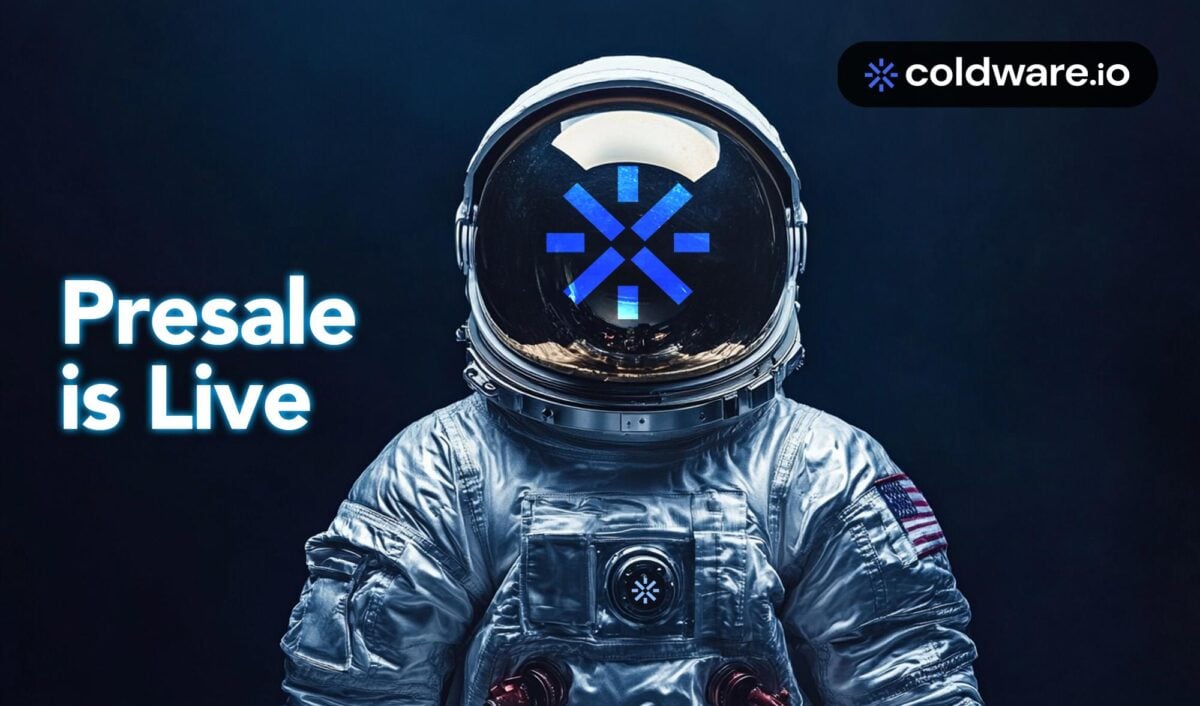As the altcoin market heats up, analysts are comparing rising stars with industry veterans — and the race between Coldware (COLD) and Cardano (ADA) to break the $3 mark is becoming one of the most discussed matchups in crypto. While Cardano (ADA) benefits from years of development and a loyal base, Coldware (COLD) enters the scene with a fresh edge: real-world utility, physical device integration, and a presale that has already raised millions. The question isn’t just which will hit $3 — but why Coldware (COLD) might get there first.
Coldware (COLD) is unlike traditional Layer-1 chains. It’s a hardware-first crypto project that’s embedding blockchain utility into its own mobile and desktop devices, such as the Larna 2400. These products aren’t just wallets — they’re Web3 operating systems built for encrypted messaging, staking, dApp interaction, and cold storage, making them accessible to non-technical users. This hardware layer gives Coldware (COLD) an adoption model that bypasses app stores and browser extensions, solving one of crypto’s biggest hurdles: friction.
Coldware (COLD): Web3 Hardware Meets Layer-1 Blockchain
Coldware (COLD) isn’t just launching a Layer-1. It’s building a complete hardware-backed Web3 ecosystem, where physical devices like the Larna 2400 smartphone and Coldbook laptop become gateways to encrypted staking, messaging, DeFi, and cold storage.
Key highlights include:
- Larna 2400: 6.56” OLED, Snapdragon 8 Gen 2 chip, 5,000mAh battery, IP68 water resistance, encrypted communication, and native Web3 apps.
- Coldbook: Desktop-class blockchain-enabled laptop for corporate and retail users, fully integrated into Coldware’s Layer-1 & subnet network.
- Coldware Subnet: A private blockchain layer for medium-to-large corporations requiring higher data security.
By offering these tools natively, Coldware eliminates crypto’s friction points—no app store, no browser extensions, no seed phrase confusion. Users get full ownership and offline-first control.
Presale Surge: $7.7M Raised and Stage 3 in Progress
Currently in Presale Stage 3, Coldware (COLD) has raised over $7.7 million, with 73.77% of tokens sold and a current price of $0.008 USDT. The next price increase is set at $0.00975, and early investors can now claim +50% bonus tokens using the code ‘50FLASH’.
Analyst forecasts suggest the token could open trading at $0.25, with potential upside to $0.85 in Q1 2026—representing a potential 10X+ return from current presale levels. Compared to blue-chip tokens, Coldware requires less market cap to move fast, and its unique product approach supports long-term value creation.

Presale Power and Projected Valuation Upside
With over $6.6 million raised, Coldware (COLD)’s presale has already attracted serious attention. Analysts note that token launch valuations could start near $0.25, with upside potential towards $0.85 in Q1 2026 if demand meets projections. From there, Coldware (COLD) could rally further — and given its relatively low starting point, reaching $3 may not require the kind of capital inflows that Cardano (ADA) would need. This positions Coldware (COLD) as a potential 10X candidate in a space dominated by Layer-1 fatigue.
More importantly, Coldware (COLD) brings something many crypto assets lack: real-world asset (RWA) utility. The Coldware platform is not just a token ecosystem — it’s a physical access point to decentralized finance, ownership, and communication. This RWA narrative is increasingly attractive to investors looking for projects that bridge the digital and physical worlds, especially in the context of Web3 adoption.
Cardano (ADA) Builds Institutional Trust and Network Strength
Cardano (ADA), meanwhile, is gaining steam through more traditional avenues. Its current price near $0.80 follows months of whale accumulation and renewed investor interest after ETF filings from Grayscale and Tuttle Capital. If approved, these could channel institutional capital into ADA, pushing it toward the $3–$4 range.
On-chain fundamentals also support ADA’s growth. The Midnight protocol launched on August 5th with 470 million NIGHT tokens claimed, improving ADA’s privacy use case. Just days later, the Hydra upgrade was deployed — bringing sub-second transaction finality to the network. These technical milestones have shifted market perception, with some analysts eyeing $5 as a bullish ceiling.
However, Cardano (ADA)’s climb to $3 would require a continuation of strong ETF progress, ecosystem expansion, and a favorable macro environment. It’s a path that involves less risk — but also fewer explosive upside scenarios, especially for retail investors seeking rapid multipliers.
Who Will Break $3 First — and Why It Matters
Coldware (COLD) holds a timing advantage. Still in its presale phase, the project benefits from early-stage valuation mechanics. With tokenomics designed to reward early buyers, Coldware (COLD) doesn’t need legacy validation to grow — it needs traction and delivery on its hardware roadmap.
Meanwhile, Cardano (ADA) is a stable blue-chip in the making. It has more liquidity, more exchanges, and a larger community — but also more inertia. For those betting on exponential upside over slow, steady growth, Coldware (COLD) may offer the better chance of crossing the $3 threshold first.

Conclusion: Utility vs Legacy — Coldware’s Time May Come Sooner
Coldware (COLD) and Cardano (ADA) are both positioned to rally in the next market cycle, but they play different games. ADA is the safe bet with broad institutional appeal. Coldware (COLD) is the disruptor with hardware utility, presale energy, and a fast-moving roadmap. If Web3 adoption truly hinges on user-friendly tools, Coldware (COLD) may sprint past ADA in the race to $3 — not because it’s bigger, but because it’s bolder.
For more information on the Coldware (COLD) Presale:
Visit Coldware (COLD)
Join and become a community member:
Disclaimer: This media platform provides the content of this article on an "as-is" basis, without any warranties or representations of any kind, express or implied. We assume no responsibility for any inaccuracies, errors, or omissions. We do not assume any responsibility or liability for the accuracy, content, images, videos, licenses, completeness, legality, or reliability of the information presented herein. Any concerns, complaints, or copyright issues related to this article should be directed to the content provider mentioned above.






